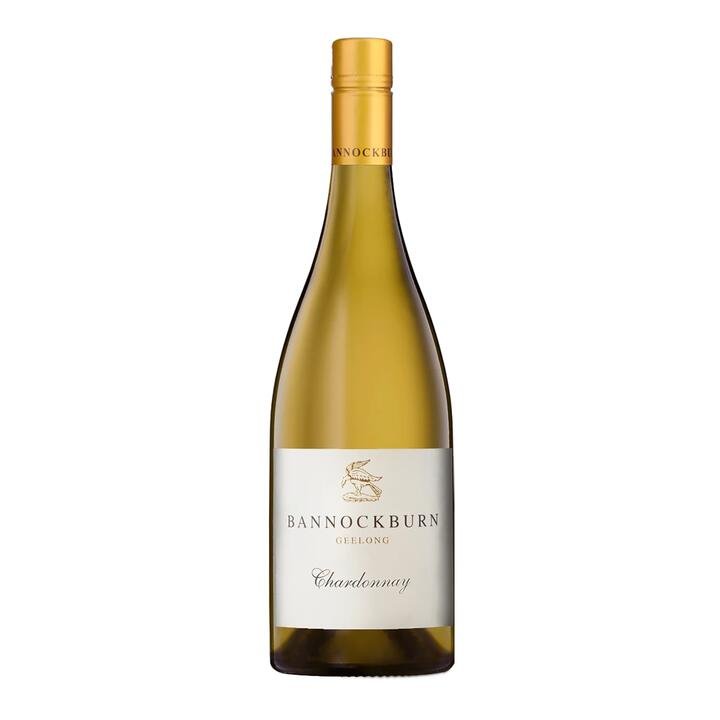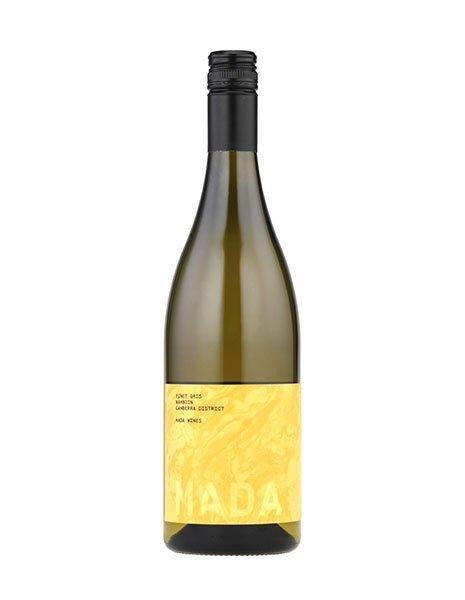Bannockburn Chardonnay 2023
$67.99
Maker: Stuart Hooper had a vision to create a vineyard in Australia that would produce exceptional quality wines. In the early 1970s he selected a plot of land in the Moorabool Valley and planted shiraz vines. As the vineyard expanded, more land was acquired, and additional grape varieties were planted. Bannockburn Vineyards, founded by Stuart Hooper, continues to thrive today, with a commitment to quality and organic farming practices. Matt Holmes joined Bannockburn Vineyards as the winemaker in 2015, aiming to produce wines representative of the vineyard’s style and site with gentle inputs and minimal additions in the winemaking process. Bannockburn Vineyards is comprised of 24 vineyard blocks, 8 grape varieties, and 16 clones. The soil is low-fertility with good drainage, allowing for controlled growth. Organic farming principles are followed, with the addition of compost to maintain vineyard balance. The soil variations range from volcanic surface debris to ancient sea beds, layered over limestone bedrock. The first vineyard was planted in 1974, making the vines some of the oldest in the Geelong region. The Moorabool Valley, where the vineyards are located, has an average annual rainfall of 540mm, primarily occurring in winter and spring. The region benefits from a maritime influence, resulting in mild temperatures and long sunshine hours. The stable, dry and low-humidity conditions during the grape-growing season allow for a mild and extended ripening period, ideal for healthy vines and gradual flavour development. The unique combination of meagre rainfall, low vigour soils, prevailing winds and close plantings contributes to the restricted yields and distinctive flavors and structures of Bannockburn wines. Vineyard: The estate comprises 24 vineyard blocks, 8 grape varieties and 16 clones. The soil is generally low-fertility with good drainage, allowing for controlled growth but rich enough that our organic farming principles only require the addition of compost to maintain vineyard balance.Subtle but important soil variations are the result of a continuum of volcanic surface debris and ancient sea beds running to richer and darker soils, layered over predominantly limestone bedrock. The first vineyard was planted in 1974, with subsequent plantings through to the early 1980’s, making our vines some of the oldest in the Geelong region. Like their predecessors, the team at Bannockburn do their best to express the vineyard through the wine we produce, telling a deeper story of soil and site. Their viticultural principles are based on healthy respect for the land and responsible farming, e.g the use of organic composting and straw mulching to eliminate need for herbicide sprays and the cultivation of inter-row cover crops to add soil nutrients. These principles flow through into the winery where minimal additions, wild yeast ferments and low intervention winemaking results in wines that are made with integrity and that are distinctively Bannockburn. Winemaker Matt Holmes sees his role as a servant to the vineyard, growing season and fruit to produce wines representative of our style and site. Above all, gentle inputs and minimal additions are his goal. In his words, “Well-nourished vines grown in a suitable spot, picked on the right day, transcribed as wine.” Previously, Matt had been making wine in the Okanagan wine region of British Columbia, Canada. During these 10 years he also gained a broad range of experience working additional vintages in the U.S., France, Italy, New Zealand as well as Australia. Winestyle/Cuvee: Bannockburn Chardonnay is made from a blend of estate fruit grown on our established vineyards; the oldest vines planted in 1976, through to the most recent 2016 planting. This release includes fruit grown across Olive Tree Hill (1976), Winery Block (1981), Stuart Block (1997), Grigsby (2007) & Kelly Lane (2016) vineyards. The clonal mix includes P58, Bernard 76, 95 & 96, with various vine spacings and planting densities. Handpicked parcels of fruit were whole bunch pressed, settled over night, and racked to barrels for a wild yeast fermentation in a combination of French hogsheads and puncheons; approximately 20% was new oak. Malolactic fermentation occurred on 70% of the blend, with the remainder blocked. The wine was left on lees unstirred for 10 months prior to blending and bottling. The 2023 Chardonnay offers a vibrant aroma of stone fruit, citrus, wet stone and flint characters along with yeast and fresh pastry. Spicy and smoky wood characters are present but integrated into the wine. The flavours are fresh and bright, and the profile shows tautness and depth as a young wine, with great potential. Mouthwatering acidity, tension, and presence define the palate. Tasting Note: Nose – Vibrant, Stone Fruit, Wet






There are no reviews yet.